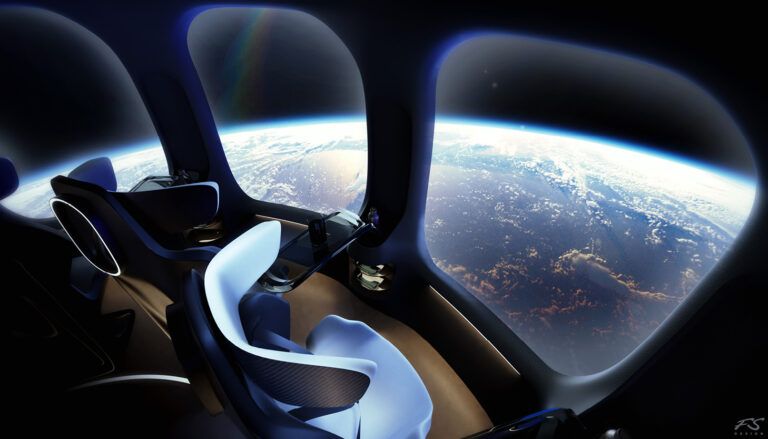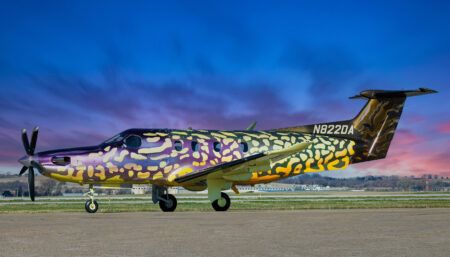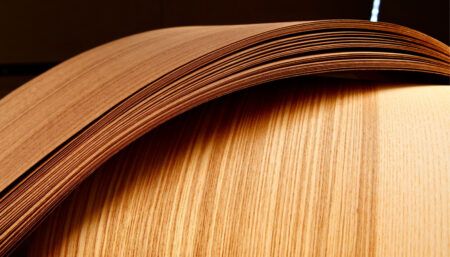Frank Stephenson, founder and creative director of Frank Stephenson Design, reveals all about the design of The Aurora, the capsule underpinning Halo Space’s space tourism offering.
Halo Space is working towards the launch of a commercial service, whereby a pressurised capsule (The Aurora), attached to a helium balloon, would make a gradual ascent, with minimal G-forces, to a maximum altitude of 35km. Here passengers can observe the curvature of Earth from the edge of space. The flights would average four to six hours.
Frank Stephenson Design was tasked with the interior design for The Aurora, collaborating with Halo Space’s engineering team and prioritising user comfort, luxury, quality, lightness and safety.
Space utilisation was key. Eight passengers and a pilot are seated around a central unit. “Weight distribution and safety regulations, amongst other engineering constraints, were the major challenges,” says Frank Stephenson, founder and creative director of Frank Stephenson Design. “Intensive research and experimentation with materials and technology have been carefully curated to ensure that meeting these constraints never came at the cost of luxury.”
A 360° view is enabled by windows totalling 2.82m²; Stephenson says each is “as big as constraints allow”. The cabin is arranged so that each window is aligned to a single passenger seat facing it, for a dedicated view. “The constant rotation of the capsule ensures that the view is not monotonous,” says Stephenson. “Passengers can also get a glimpse of what others are seeing, thanks to the open cabin design.”
The lighting design entailed a tricky balance, to avoid “luminous interference to the panorama, and the light that comes with it,” Stephenson shares. Aluminium alloy and composites have been used to minimise weight; providing a total take-off weight of 3,500kg.
The design had to be adaptable to upcoming innovations. For example, the team is keeping a lookout for material developments. “The final materials will be disclosed towards the start of the commercial flights, since there is time and opportunity for innovation and if necessary, replacement,” says Stephenson.
Overall he says the interior is “highly feasible”. Real-scenario testing will begin soon, bringing more input. “We look forward to learning the outcomes of the testing and to constantly evolve our design,” says Stephenson.
Key features of the cabin include:
Futurism
The aesthetic design draws inspiration from Space Age architecture and design, incorporating curved lines and reflective materials. “Space Age design pushes us to use materials that not only communicate comfort and luxury but also celebrate the technology and engineering that drives the design,” says Stephenson. “We have clothed the cabin with a design fabric that could be defined as in-between modern den design and a space shuttle interior.”

Central unit
The central unit houses a lavatory, a service module and the emergency exit. The storage zone behind the pilot – accessible by cabin crew through service hatches and drawers – accommodates the safety and emergency equipment.
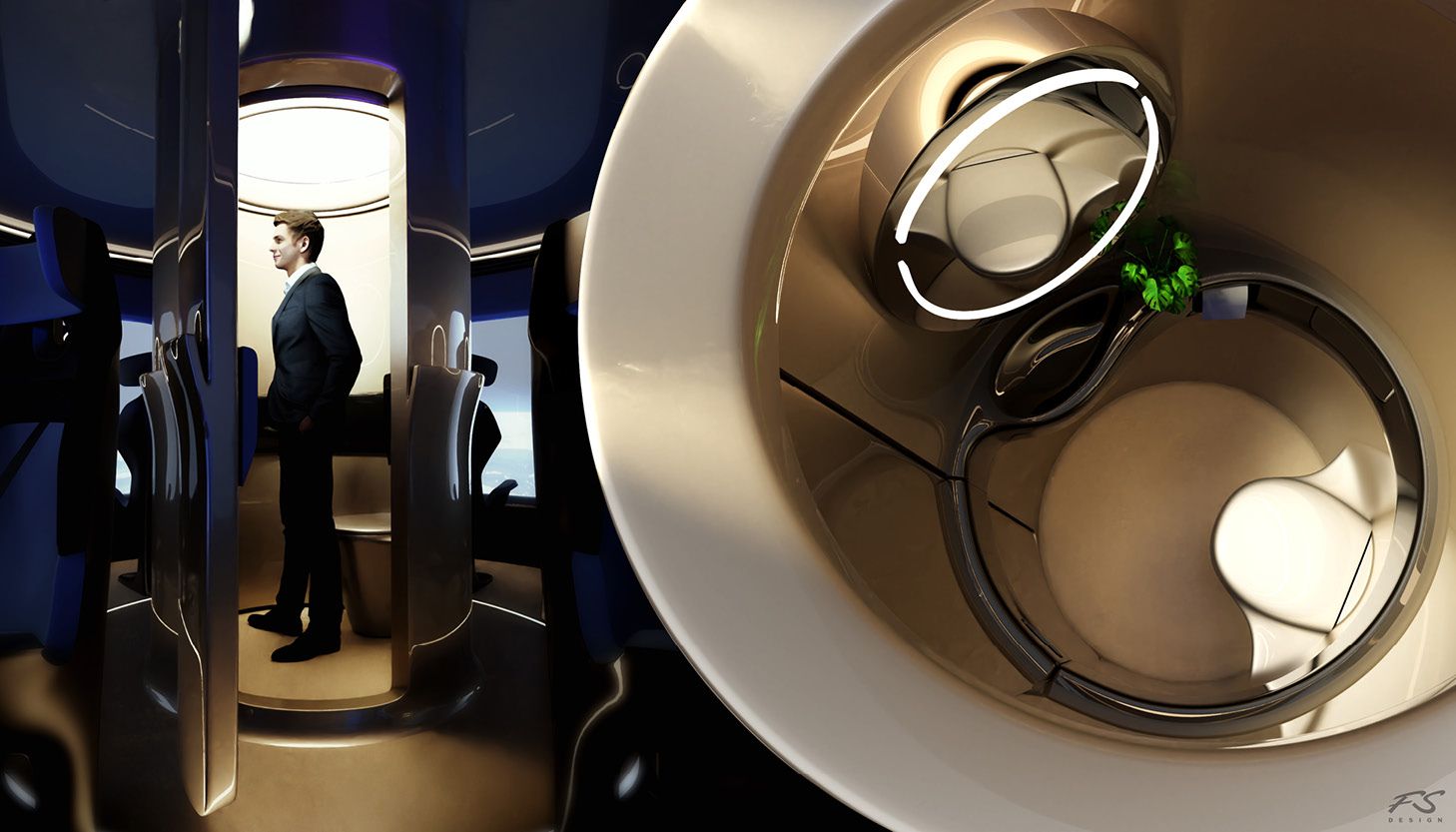
Seat set-up
Each seat has a folding table, together designed to replicate a living room experience. “The passenger has everything they would need within the reach of their hands, with the integration of augmented reality or a physical tablet (for those who prefer everything more tangible), and a carefully curated culinary experience,” says Stephenson.
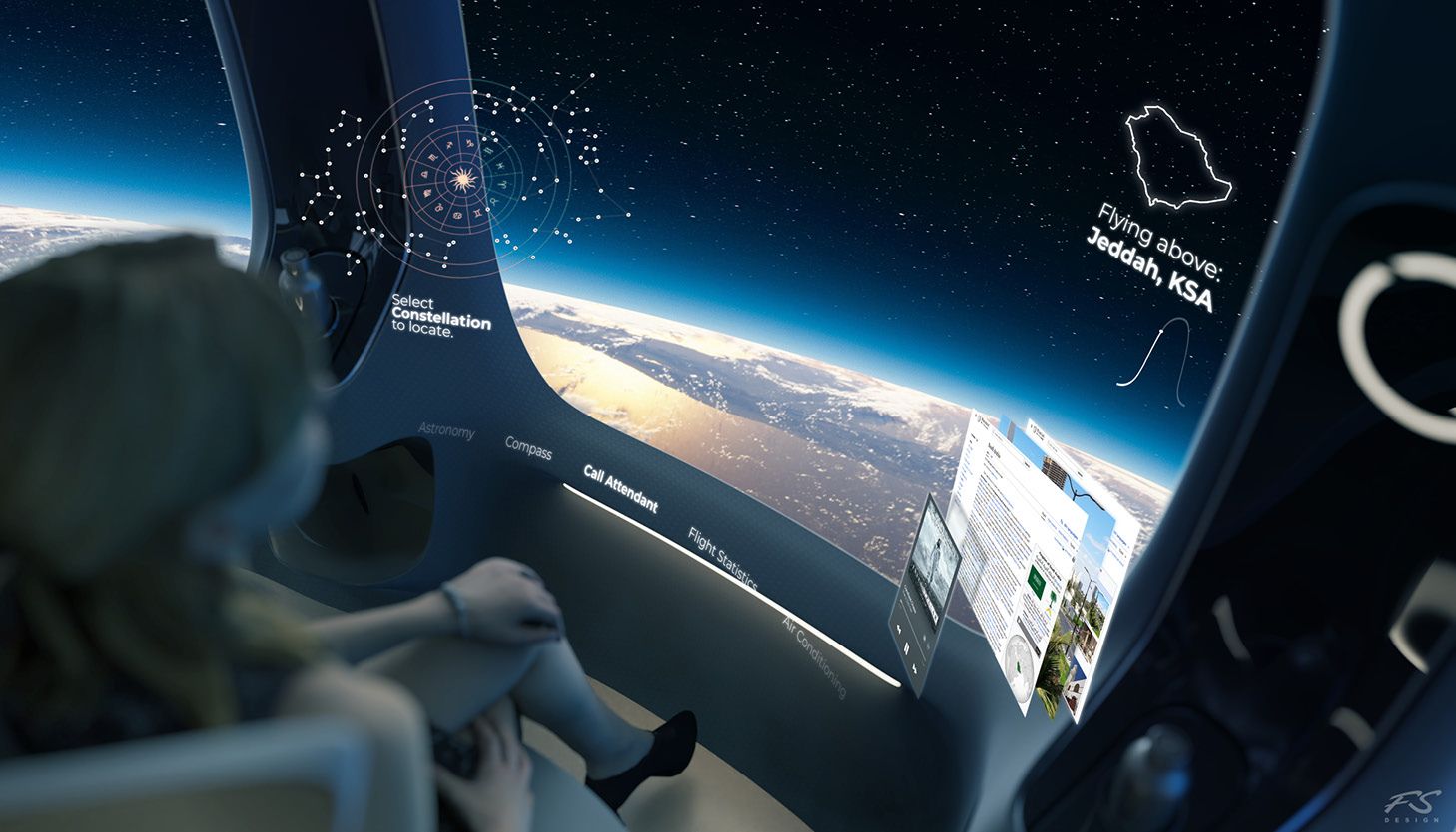
This feature was first published in the July 2024 edition of Business Jet Interiors International.


